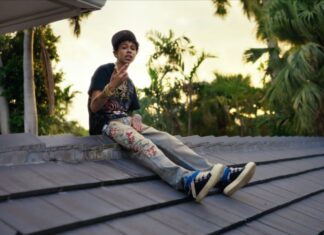
In the ever-evolving landscape of digital marketing, music video ads have emerged as a dynamic tool to captivate audiences, evoke emotions, and drive conversions. However, creating music video ads that resonate and convert requires more than just catchy tunes and stunning visuals. It involves strategic planning, understanding the audience, and utilizing the right techniques to maximize impact.
🎯 1. Know Your Target Audience Inside Out
The foundation of any successful marketing campaign is a deep understanding of the target audience. When it comes to music video ads, this knowledge should go beyond basic demographics.
-
Identify Audience Preferences: What genres of music do they prefer? What visual styles appeal to them? Understanding these preferences helps create content that resonates on a personal level.
-
Address Pain Points and Desires: Think about what your audience needs and how your product or service can solve their problems or fulfill their desires. Tailor the video’s message to align with their motivations.
By aligning the video’s music, visuals, and message with the audience’s interests, you’ll increase the likelihood of capturing their attention and driving conversions.
🎵 2. Choose the Right Music
Music is the heartbeat of a music video ad. It’s not just background noise; it sets the tone, evokes emotions, and influences viewer engagement.
-
Match Music to the Message: The music should complement the message of the ad. If you’re promoting a fitness product, choose high-energy, motivational tracks. For luxury brands, consider more elegant or sophisticated music.
-
Leverage Licensing and Original Scores: While using popular tracks can add familiarity, licensing can be expensive. Alternatively, original scores can be crafted to evoke the desired emotions and align perfectly with the ad’s theme.
-
Ensure High Audio Quality: Poor audio quality can distract viewers and undermine the message. Make sure the audio is professionally mixed and mastered for clarity.
⏱️ 3. Hook Viewers in the First Few Seconds
Attention spans are short, and most viewers decide whether to keep watching a video within the first few seconds. To maximize the impact:
-
Start with a Strong Visual or Sound Cue: Use eye-catching visuals or compelling sound effects to grab attention immediately.
-
Present a Problem or Value Proposition Early On: Clearly communicate what the ad is about and why viewers should care, right from the start. A quick introduction to the pain point or solution can set the stage for the rest of the video.
📖 4. Tell a Story
Stories are engaging and memorable. Instead of simply showcasing a product, build a narrative around it.
-
Develop a Compelling Story Arc: Incorporate a beginning, middle, and end, even if the video is only 15-30 seconds long. This structure gives the ad a sense of progression and keeps viewers engaged.
-
Make the Product Part of the Story: Ensure that the product or service is seamlessly integrated into the storyline. The audience should understand how it fits into their lives and benefits them.
🎨 5. Use Visuals That Amplify the Message
High-quality visuals are a must, but the imagery should also serve a purpose. It should complement the music and enhance the message.
-
Incorporate Branding Subtly but Effectively: While you want to avoid being overly promotional, make sure the brand is recognizable. This can be achieved through logos, color schemes, or product placement within the video.
-
Experiment with Different Visual Styles: Animated graphics, live-action, slow motion, or even abstract visuals can all be effective, depending on the product and audience. Try different approaches to see what resonates most.
📢 6. Include a Clear Call to Action (CTA)
If you want viewers to take action, you need to guide them toward the next step.
-
Make the CTA Direct and Actionable: Use phrases like “Shop Now,” “Learn More,” or “Sign Up Today” to create a sense of urgency and provide clear direction.
-
Place the CTA Strategically: Depending on the length of the video, the CTA can appear at the end or be woven into the content throughout. Interactive elements, such as clickable links, can also encourage engagement.
📱 7. Optimize for Multiple Platforms
Music video ads often perform differently across platforms due to varying user behaviors and technical specifications. Tailor your ads to suit each platform.
-
Format and Length: Consider shorter ads for platforms like Instagram or TikTok, where attention spans are shorter, and longer versions for YouTube or Facebook.
-
Mobile Optimization: Make sure the ad looks and sounds great on mobile devices, as a significant portion of users will be watching on their phones.
-
Platform-Specific Features: Use platform-specific tools, such as Instagram’s swipe-up links or YouTube’s clickable end screens, to boost engagement.
📊 8. Utilize Data and Analytics to Refine Your Approach
Successful video marketing isn’t a one-and-done effort. It requires constant refinement based on data.
-
Track Key Metrics: Monitor engagement rates, watch times, conversion rates, and other relevant metrics to see how the ad is performing.
-
A/B Testing: Test different versions of your video ad to determine what works best. Experiment with varying the music, visuals, CTA, or storytelling approach.
-
Adjust Based on Insights: Use the data gathered to make informed adjustments to future ads. Continuously refining your approach ensures ongoing improvement and maximized conversion potential.
🎯 Conclusion
Creating music video ads that drive conversions is both an art and a science. It requires a balance of creativity, strategy, and constant refinement. By understanding your audience, choosing the right music, telling a compelling story, and utilizing data to optimize your approach, you can create music video ads that not only captivate but also convert.
Remember, the key to success lies in crafting a seamless blend of sound, visuals, and strategy that resonates with your audience and compels them to take action.
























 🔥 Limited Time: Get 55% OFF All Plans - Ends in:
🔥 Limited Time: Get 55% OFF All Plans - Ends in: